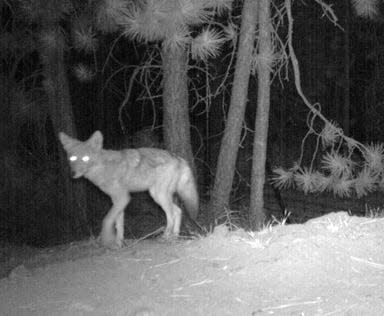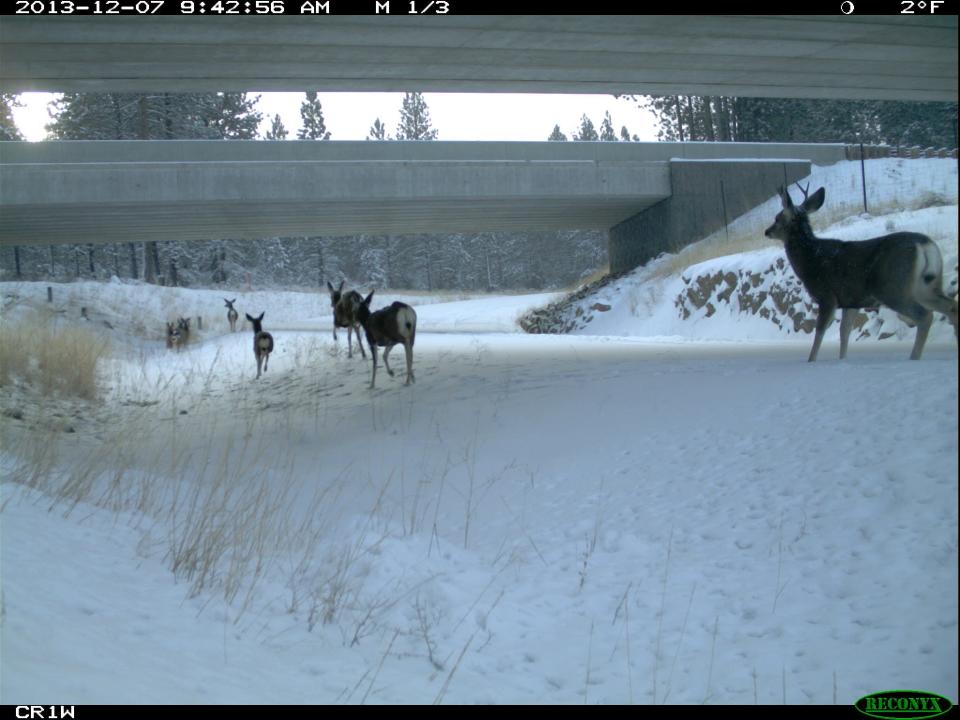Bill would put $5 million toward safe road crossings to protect wildlife from vehicles
Washington state has more than 30 wildlife crossings – underpasses, overpasses, culverts or other structures built specifically to help wildlife safely cross busy roads.
California has more than 50, and currently is building the world’s largest wildlife crossing, across eight lanes of traffic on U.S. 101 near Los Angeles.
Oregon, meanwhile, has just five.
As a result, drivers in Oregon are more likely to collide with an animal on the road than those in other West Coast states, according to a study from State Farm insurance company.
A bill in the Legislature could change that, allocating at least $5 million in the current biennium for wildlife crossings. It is scheduled for a public hearing Wednesday.
The Oregon Department of Transportation recorded nearly 6,000 vehicle collisions with wildlife in 2020, and experts estimate twice that number go unreported.
“In comparison to other western states, Oregon is lagging pretty far behind,” Rachel Wheat, wildlife connectivity coordinator for the Oregon Department of Fish and Wildlife, said.
Explore Oregon Podcast: Columbia Gorge's best hikes, best eats, wildfire recovery
Oregon has never had dedicated funds for wildlife crossings, Rep. Ken Helm, D-Washington County, the bill’s sponsor, said during a legislative committee meeting earlier this month.
Instead, crossings have been incorporated into existing construction projects, usually with financial help from private groups.
“There are more vehicle wildlife collisions occurring in this state than I ever thought,” Helm said. “It is a significant problem, a significant number. There’s significant damage to vehicles, sometimes, unfortunately, resulting in human death, mostly resulting in death to the animal that is hit.”

In 2019, the Legislature passed House Bill 2384, directing ODFW and the Oregon Department of Transportation to work together to figure out where wildlife collisions occur.
“Research is ongoing to determine locations where wildlife migration patterns intersect with Oregon highways,” ODOT spokeswoman Katherine Benenati said.
“We know that in places where we’ve built wildlife crossings, vehicle-wildlife collisions have dramatically declined. Because these projects are largely self-sustaining, and the economic benefits of reducing collisions are so high, a wildlife crossing largely pays for itself within a few years,” she said.
The proposed legislation also would allow the state to apply for federal matching funds available through President Joe Biden’s infrastructure package.
Coming up: Upcoming Willamette Valley projects include Newberg Dundee bypass
Biden’s package contains $350 million over five years for animal-friendly infrastructure nationwide, or $70 million per year.
Collisions with vehicles are threatening some of Oregon’s wildlife populations.
For example, vehicle collisions are one of the primary reasons for the decline of the state’s coastal marten, a threatened species, Wheat said.

And in central Oregon, mule deer have declined by more than half in the past 15 years, said Michael O’Casey, Oregon/Washington field representative for the Theodore Roosevelt Conservation Partnership.
“More mule deer were killed by vehicles than legal hunting,” he said
Calla Hagle is the natural resources director for the Burns Paiute Tribe, in Malheur County.
The land contains one of the worst deer-vehicle collisions hotspots in the state, Hagle said.
The tribe already has identified a specific opportunity for a wildlife crossing
“Is the investment worth it to Oregonians? In most hotspot areas you can do the math,” she said. “While designing and implementing countermeasures can cost millions of dollars, Oregonians spend millions of dollars each year on vehicle repairs and possible injuries.”
House Bill 4130 is scheduled for a virtual public hearing at 1 p.m. Wednesday in the House Environment and Natural Resources committee. To watch, go here: olis.oregonlegislature.gov/liz/2022R1/Committees/HENVNR/Overview
Tracy Loew is a reporter at the Statesman Journal. She can be reached at tloew@statesmanjournal.com, 503-399-6779 or on Twitter at @Tracy_Loew.
This article originally appeared on Salem Statesman Journal: Oregon bill would put $5 million toward safe road crossings for wildlife

